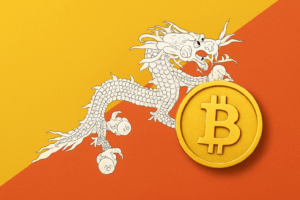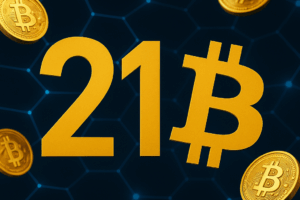The rapid growth in the field of digital currencies, for obvious reasons, is not the only reason why philosophers feel called upon to examine the development of the sector since the introduction of Bitcoin from a corresponding point of view. The cultural aspect of cryptocurrencies deserves an in-depth analysis. A popular point of view, represented by many experts: The blockchain is the logical next step on the road to the digital revolution. But as always, there are not only positive assessments when it comes to new technologies. The concept of autonomy has a high priority in the evaluations of many experts. The basic assumption on the part of crypto advocates: It was high time to create new infrastructures that would shift the “power” of existing financial and monetary systems away from banks and politics and towards users.
Crypto Culture is Becoming Increasingly Important and is Crossing Borders
But is this already the case at this point in crypto evolution? And have Bitcoin and altcoins actually triggered a cultural change – and if so, in what form and to what extent? The answers to these questions vary considerably. For convinced crypto fans from the very beginning, the emergence of the blockchain was the long-awaited technological turning point to remedy weaknesses and disadvantages of existing systems. Up to the current point in time – the beginning of the 2020s – a lot has actually happened. However, there is only limited talk of the great revolution that is causing a stir outside the crypto bubble. However, there are a few financial institutions and banks that are factually investing time and money in their own developments. The fact that countries like China or companies like the US banking giant JP Morgan are introducing their own digital currencies (in China’s case as the central bank’s Digital Yuan, while JP Morgan developed its own stablecoin) is mainly due to fear of the possible consequences of the crypto boom.
Governments worldwide see cryptocurrencies as an inflation risk and a threat to fiat money. Whether these concerns are justified or not will not be discussed further here.
Traditional Economy Recognizes the Signs
Even if based on concerns, digital currencies and the blockchain are at least indirectly bringing about a gradual cultural change in the traditional banking universe. More than a decade after the launch of the first digital currency, the realization of the former utopia has been implemented in some areas or is well on its way. The best example is the art world around the globe. Non-fungible tokens (NFTs) have been making their way here for some time. Musicians, photographers and other artists are discovering NFTs as a forgery-proof medium for themselves. Fans and collectors can now purchase (visual and acoustic) works of art that have long been traded as creations by trendy artists, sometimes at astronomical prices.
As a result, well-known auction platforms are increasingly expanding the growing niche market with digital art. The advantage for artists is, among other things, that they can generate direct sales.
Blockchain as an Interface between Tradition and Innovation
Similar to the inclusion of digital assets in trading platforms of banks and brokers, auctions also gradually open new doors to the market. This is how investors become aware of the sector, who have often been dissatisfied for years with high fees and costs for investments via traditional banking systems. Not to mention the enormous influence of digital currencies in regions without comprehensive infrastructures for everyday banking transactions. Especially in African countries, many people still do not have access to banking systems. Thanks to fast execution and low costs, cryptocurrencies and the blockchain are the ideal solution. Banks are coming under pressure due to the interest, and many companies in the industry are launching their own concepts or investing in crypto projects. However, the crypto culture that has developed over the years makes it difficult for the banking world to exert influence due to the prevailing skepticism towards the status quo.
On the other hand, two criticisms regarding the crypto culture are causing a certain bland aftertaste around the impressive growth course of the blockchain. On the one hand, there is the dilemma regarding sustainability. Digital infrastructures have so far been characterized by high energy consumption. The young generation, which has a significant influence on the crypto sector, values environmentally conscious technologies and investment products. The good news: Developers are working to reduce environmental pollution by switching to more energy-efficient consensus mechanisms.
Crypto Developments are Creating New Cultural Markets
Hardly any other phenomenon is discussed as much in net culture as the blockchain. But only a few really understand how the technology works. Money transactions may be carried out without banks in the form of so-called cryptocurrencies. For the cultural scene, this means that artists could be paid directly. The blockchain strengthens the autonomy of its users, but also has downsides: The ideology behind it has dangerous patterns of thought. And the operation of the digital infrastructure is harmful to the environment. Experts such as the cultural scientist Michael Seemann point to another problem with many crypto platforms. Seemann has long been concerned with major “players” in the digital world – for example, the social media giant Facebook, which is itself working on its own cryptocurrency. The researcher sees parallels between digital companies as well as cryptos and the blockchain and traditional markets and even states.
Although many system developers pride themselves on the independent culture of the industry. Contrary to the promises of many crypto networks, however, control is often not in the hands of the community. Instead, large investors – also known as crypto whales – often determine the fate of the systems in large parts. Admittedly, there are also other crypto systems in which users jointly decide on a say in how cultural change takes place and which developments are desired. All in all, many networks do not function entirely without the sovereignty of certain groups.
The End of Old Systems through Decentralization and Transparency?
As far as decentralization is concerned, not only the cultural scientist Seemann expressed skepticism as to whether this is even desirable for the culture of currencies in the long term. Like the scientist Seemann, many observers worldwide are hesitant as to whether cryptocurrencies as digital protocol platforms with an even distribution of power among many individual participants can be a good cultural change – i.e. as the exact opposite of traditional currencies, in which control and sovereignty lie solely with central banks. In exactly these classic currency systems, controls can prevent data abuse, money laundering and financing of international terror through interventions. With protocol-based digital currencies, the question of how to deal with such risks remains a problem.
However:
It is precisely this overriding of a central control instance that determines the cultural “spirit” of cryptocurrencies, regardless of the unquestionable risks. On the other hand, decentralized networks achieve a degree of transparency through the participation of many individuals in the processing of transactions that banking systems cannot offer to users.
Crypto Networks Can be Influenced by Large Market Participants
A popular example of the fact that blockchains are often not as decentralized as claimed is the so-called 51 percent attack. Critics like to cite this when they want to demonstrate that the irrefutable decentralization in many networks is more wishful thinking than fact. System users who are responsible for more than half of the network’s computing power can manipulate the network as a whole. In the case of Bitcoin, for example (and not only there), the power of mining is now in the hands of large mining farms from the Far East. Real decentralization and 100 percent security look different. In addition, critics point to the influence of crypto exchanges with regard to the revolutionary crypto culture. They are gradually striving for centralization, which is in obvious contrast to the original approach of digital currency systems and blockchains.
And it is not only the leading trading venues that are increasingly flexing their muscles. Personalities such as Tesla founder Elon Musk have repeatedly shown in the recent past how easily the market can be influenced. Among other things, Musk caused massive price movements several times with news about the Twitter platform, including Bitcoin.
No System is Infallible – but the Blockchain Opens up New Possibilities
Despite the various accurate references to problems and weaknesses of the crypto culture, one thing becomes clear again and again. There is a need on the part of the people. The number of those who are dissatisfied with traditional systems is constantly increasing. The general net culture is thus consistently asserting itself. This is not changed by assessments that see nothing more than a comparatively slow database in the blockchain due to the complex validation processes. Of course, solutions for control are also needed in connection with the crypto culture in order to limit the susceptibility to errors and the risk of abuse. Many supporters rightly counter the criticism of the supposedly low benefit by pointing out that blockchain technology has made the digitization of many things possible in the first place. The corona pandemic, for example, has proven how vulnerable global supply chains were.
The blockchain offers solutions here that could avoid future difficulties. There is a good reason why supporters of the old currency system declare the establishment of Bitcoin and digital currencies to have failed. Anyone who sees their own skins swimming away, so to speak, has always been the loudest to call for the state.
Opportunities of the Blockchain in the Time after the Pandemic
Objectively speaking, we are currently only in an early phase of crypto evolution and at the beginning of what can rightly be described as a cultural change in the financial world. The best proof of this is the increasing interest of companies in IOTA technology and smart contract functions, which are increasingly playing a role in public reporting, especially through the Ethereum system. If you ask experts what the blockchain culture will look like in a decade or two, many experts paint a rosy future. More rights to protect one’s privacy and a significant change in many areas from the electricity market to the credit sector to an even stronger development of digital art via NTFs are just some of the most important aspects of the change. Quo vadis, blockchain? It is still unclear where the crypto world will be in a few years. But what is certain is that the possibilities for application are virtually unlimited.


